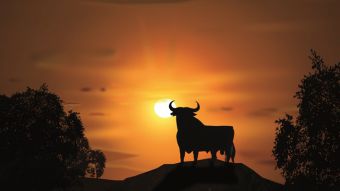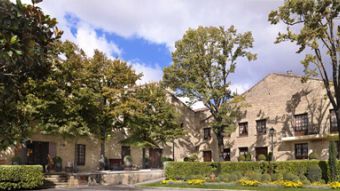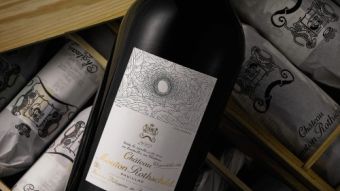150 Cántros in the 17TH Century
There is a notarized deed stating the existence of a vineyard and a winery able to produce up to 150 cántaros, the property of one Juan Chivite Frías in the Ribera region of Navarra, in the year 1647. These were no doubt the foundation of what, four centuries and eleven generations later, was to become today's Chivite Group.
It is intriguing to read that 150 “cántaros” played an important role in the early history of the Chivite bodegas. In a notarized document drawn up one hot August day in 1647, these are cited as part of the "guarantee" provided in return for a loan of 100 ducats granted to Juan Chivite Frías and his sister-in-law. Perhaps because the latter was a woman, her name does not appear on the part of the document conserved by the Chivite company. The document reads: "....the winery is able to produce up to 150 “cántaros”, is situated adjacent to Calle Real and Camino de la Carrera; has a quantity of timber and a vineyard of 30 “peonadas”….” This was sufficient collateral in the 17th century. So it already looked as if Mr.Chivite and his sister-in-law had some standing as wine growers.
A cántaro is an ancient clay vessel which, anthropomorphically speaking, has an obvious feminine symbolism. It represents the Great Mother as a receptacle of life. Well, in one way or another, Chivite’s cántaros were the seeds of what is now an important Spanish wine company. From that time until well into the 20th century, the history of this Navarra wine dynasty can be clearly traced in the testaments handing down wineries and vineyards, e.g. Juan Chivite Navascués (1678), Joseph Chivite Navascués (1709) and Juan Chivite Hernández. (1779).
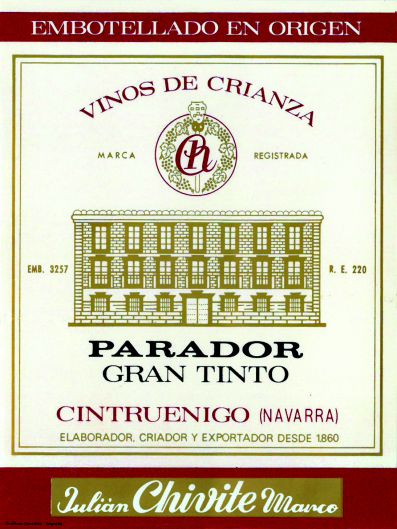 The Chivite name is deeply rooted in the town of Cintruénigo, near Tudela in the Ribera region in southern Navarra. Apparently they came from a village in French “Navarra Baja“ or Iparralde, Çivitz, then part of the Kingdom of Navarra, whose Spanish-form pronunciation evolved to Chivite over time.
The Chivite name is deeply rooted in the town of Cintruénigo, near Tudela in the Ribera region in southern Navarra. Apparently they came from a village in French “Navarra Baja“ or Iparralde, Çivitz, then part of the Kingdom of Navarra, whose Spanish-form pronunciation evolved to Chivite over time.
Claudio Chivite was an important figure back in the mid-19th century. It was he who seized the opportunity to sell wine to neighbouring France, after its vineyards had been hit by the disastrous oidium plague, coming before phylloxera and decimating the grape harvests. He became an exporter in the true sense of the word, developing a trade route running along an axis of Cintruénigo - Bayonne - Bordeaux. There are documents dating from 1860 detailing the sale of wine to France. To commemorate 125 years since these first exports, the Chivite 125 Collection brand was created in 1985. This brand marked a real quality milestone in Navarra’s and the Company's winemaking history. Claudio was succeeded by his son Félix, grandfather to today's generation. There are considerable age gaps between the Chivite generations due to the propensity of the Chivite males to marry and produce offspring later in life.
GRANDFATHER FÉLIX
Félix was another key figure in Chivite history, who set about the construction of a new, bigger bodega on what were then the outskirts of town. The family lived in a large mansion known as El Parador, which served as a coaching inn as well as a bodega and which was frequented by many traders and businessmen of the time. The El Parador house wines, even without a brand name, were beginning to become well known and appreciated by customers. Félix chose an area of land that had been home to a sort of gravel quarry which included a large crater that looked as if it would be perfect to accommodate large wooden vats underground. This was in 1872. This bodega, having seen numerous extensions and modernisations over the years, is today’s central bodega and still known as La Cascajera (a word related to gravel).
Félix’ grandson Julián, today's director of the family winery, never knew his grandfather due to the generational age gaps I referred to earlier. But he tells us that his grandfather had six “galeras“, large, four-wheeled carts, pulled by trains of mules, each transporting large barrels. They organized these mule trains to ensure there were always three on the way there and three on the way back, during the trips to serve their large number of customers located primarily in France and northern Spain. He tells us how, in the famous port of Velate, on the Irún road, his ancestor had to rent mules as reinforcement because the way up required greater animal traction.
In the late nineteenth century, Félix Chivite created a trading company under the name Félix Chivite. Chivite wines were in high demand with merchants in the Alhóndiga in Bilbao, the main wine trading centre in Spain at that time. But they still had not created a brand. The business continued in this vein until Félix’ death in 1928.
The family business then changed its name to “Viuda De Félix Chivite“ (Widow of Félix Chivite), and four years later, after the death of his widow, to “Hijos de Félix Chivite“ (Sons of Félix Chivite)
Although the Chivites tended to marry late, this was no obstacle to having children. Félix himself sired no less than thirteen. Two of his sons, Félix and Julián Chivite Marco, jointly ran the company from 1928 to 1948, when Julián, the youngest of the thirteen children, educated in Pau and a graduate of the Bordeaux Business School, bought his brother Felix's share and became the winery's sole owner. 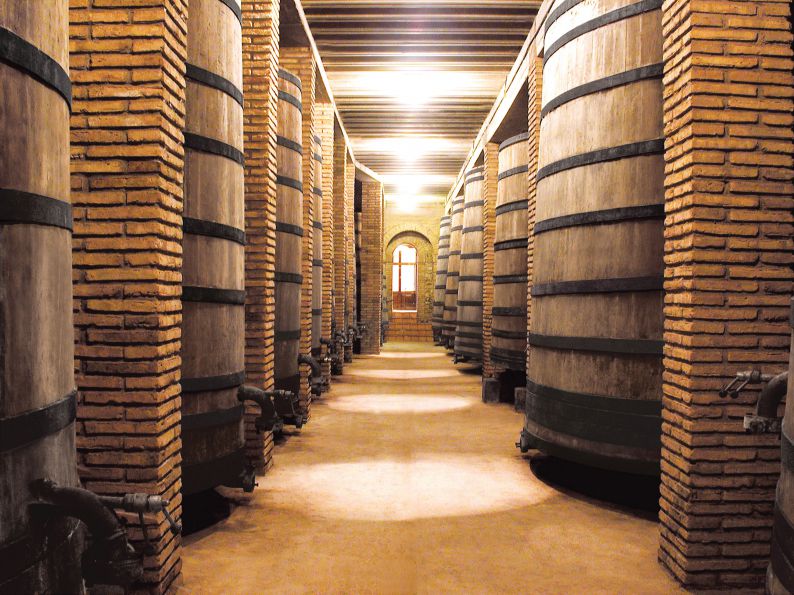
JULIAN, THE FATHER
Julián Chivite Marco carried out a major overhaul of the business and created his first brands in 1956. His son, Julián, recalls that there were two brands, El Parador, in honour of the family home where his father had been born and raised, as had Julián himself and his siblings, and another brand called Cirbonero. They were one of the first wineries in Navarra to bottle wines. Some years later, in the 1970's, they created the Castillo de Mélida brand of white, red and rosé wine, which was a huge commercial success, selling seven million bottles.
A few years later, the famous Gran Feudo took the market by storm. This was a new, modern, quality rosé, fresh, fruity and a real landmark in the history of this type of wine. Its Rhine-style bottle became a symbol of avant-guard Spanish winemaking in the 80's. The brand’s ground-breaking advertising campaigns marked an era – diverse Spanish personalities, each prominent in different ways, such as Juan Mari Arzak, Julia Caro Baroja, Jose María de Areilza, Mingote, Nuria Espert, and Miguel de la Cuadra Salcedo, have all been faces of this rosé wine which garnered numerous awards and recognition.
The culmination of a family dream came about with the acquisition of an extraordinary estate in northern Navarra, a beautiful, run-down “señorío” manor possessing land which was ideal for the cultivation of the vine. They then initiated a major project which involved the preservation and restoration of the remains of the old buildings and the construction of a bodega which was a model, both in terms of its design and its equipment, conceived by the prestigious studio of Rafael Moneo, the great Spanish architect from Navarra and a close friend of the family. They had acquired the land in 1988 and inaugurated it almost fifteen years later. It was a monumental project with spectacular results - it is one of the most beautiful bodegas and vineyards in Spain. The wines, exclusively premium quality reds sold under the Arínzano brand, became benchmarks of quality and exclusivity soon after their launch. Five years later, these wines obtained the "Vino de Pago' (single vineyard wine) classification which exists in some of Spain’s self-governing regions.
THE ELEVENTH GENERATION
In 1998, roughly 15 years after the first stone of Arínzano was laid and two years after Julián Chivite Marco had passed away, the Chivite family acquired the Viña Salceda bodega in Elciego in Rioja Alavesa, thereby fulfilling Julián Chivite Marco’s lifelong dream. 
A year later, they acquired the Granja de Legardeta estate bordering the Señorío de Arínzano. Over the last 35 years, the expansion of the Chivite family, which sadly suffered the untimely death of two of Julian Chivite Marco’s four direct descendents, has been unstoppable.
Today, under the presidency of the oldest brother, Julián, they have reorganized the group into four companies and legal entities. One is the Arínzano property, which produces the 'Vinos de Pago' under the Arínzano brand.
Another is Viña Salceda for the wines and winery in Rioja Alavesa. The third company, is the one in La Cascajera, Cintruénigo, the direct descendent of those 150 cántaros from the 17th century. This company has been named Bodegas Gran Feudo, as a tribute to its legendary brand. The family name has been reserved exclusively for the Chivite 125 Colección wines, and the new Chivite Finca de Villatuerta wines, subsumed under a new company, baptized J. Chivite Family Estates.


